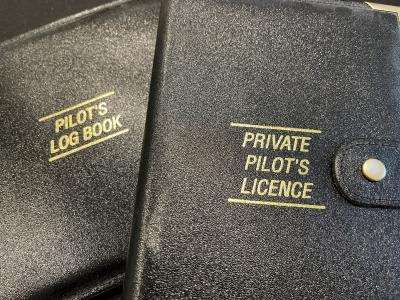Are you flying the plane or is the plane flying you?

Motion sickness
I’ve always suffered from motion sickness. I can’t read a book or work on a laptop while travelling in a car, train or aircraft. If you share this affliction, you’ll probably find, as I do, that it’s never a problem when you’re the one driving the car. I think this is because, being in control, you know exactly what’s going to happen next, most of the time.
When I was in my mid-thirties, I travelled frequently by plane and dreaded even light turbulence, especially in the final phase of a flight. Looking for a challenge, I decided to see if I could learn to fly a plane myself. The idea of taking off in a light aircraft, flying it somewhere and landing it myself, seemed a tall order, given how unwell I felt even at the thought of bouncing around in a small aeroplane.
I started taking flying lessons at my local airfield. It was challenging but, to my surprise, I did find that being in control made my tendency to air-sickness manageable. I won’t pretend it was entirely enjoyable, especially learning to handle stalls, where the aircraft drops suddenly, and spins where the aircraft rotates around its long axis while pointing at the ground. However, I did enjoy the navigation exercises and the feeling of accomplishment that came with learning to fly.
Going solo
I eventually reached the day when my instructor said “right, I’m getting out, go do a few circuits by yourself”. This is the moment when you “go solo”. In the initial phase of learning to fly you always have an instructor with you, showing you what to do and ready to step in the second you get it wrong. You fly dozens and dozens of circuits, taking off, circling the runway, landing and immediately taking off again (this is called a touch-and-go), circling, landing, taking off … over and over again until you’ve mastered every step of the procedure.
After my first successful (well, I’m still here) solo flight, my instructor explained what he had been looking for that told him I was ready to “go solo”. A new flying student learns to fly by reacting to what the aircraft does. If it starts to lose altitude, you apply more power; if it starts to yaw left you apply right rudder; if starts to turn to bank to the left you turn the yoke to the right; and so on. At this point, you are not really flying the plane, you are reacting to what it does.
Flying the plane
The tipping point is when you become confident to make the plane do what you want it to do. You are flying the plane, not reacting to it. You provide the inputs and the plane reacts, rather than the other way around. It’s a subtle transition but a massive shift in your relationship with your aircraft.
I was thinking about this concept the other day, while contemplating the week ahead and another round of diary-tetris. How much of my working week is me reacting to inputs from Outlook, Teams and WhatsApp and how much is me actually flying the plane. This is something I talk about a lot with my coaching clients.
In the modern corporate world we have two modes of operation. In the first mode, we are driven by inputs from other people. Our working day is structured for us by a series of recurring meetings, by tasks other people have set for us, and by a never-ending supply of emails and messages, each of which provides a stimulus to which we respond.
In the second mode, we are flying the plane. We think about our objectives and those of our team and ask ourselves what we need to do this week, this day, to move us closer to those objectives. This sets our agenda and we start with a clear idea of what we need to accomplish in the week ahead and what we need to get done right now, today.
Setting your own agenda
This isn’t easy to do. In fact it can be hugely challenging. Responding to constant inputs from other people is the path of least resistance. Whereas, setting your own agenda requires a deeper understanding of what you want to achieve.
What is it that you and your team aim to accomplish in the next year or the next quarter, and what, therefore, do you need to accomplish this month, this week? Have you scheduled this work and prioritised it ahead of all random things you might otherwise get sucked into?
If you’re going to fly the plane, rather than react to its inputs, you need to be clear on how your work contributes to your goals and what are the most important things for you to achieve.
If you have this level of clarity, you will be unstoppable and, as a side-benefit, will suffer less from motion-sickness.
